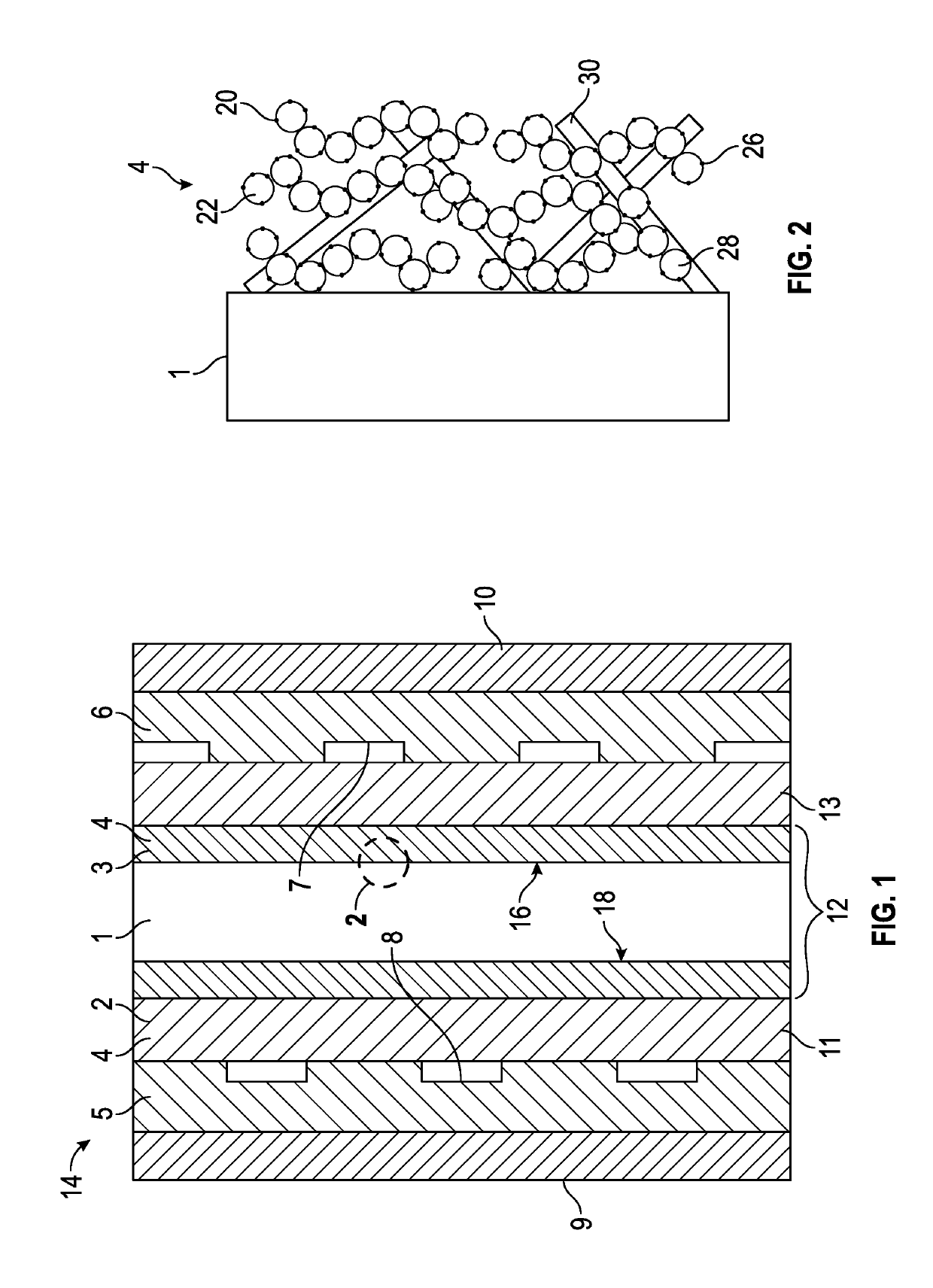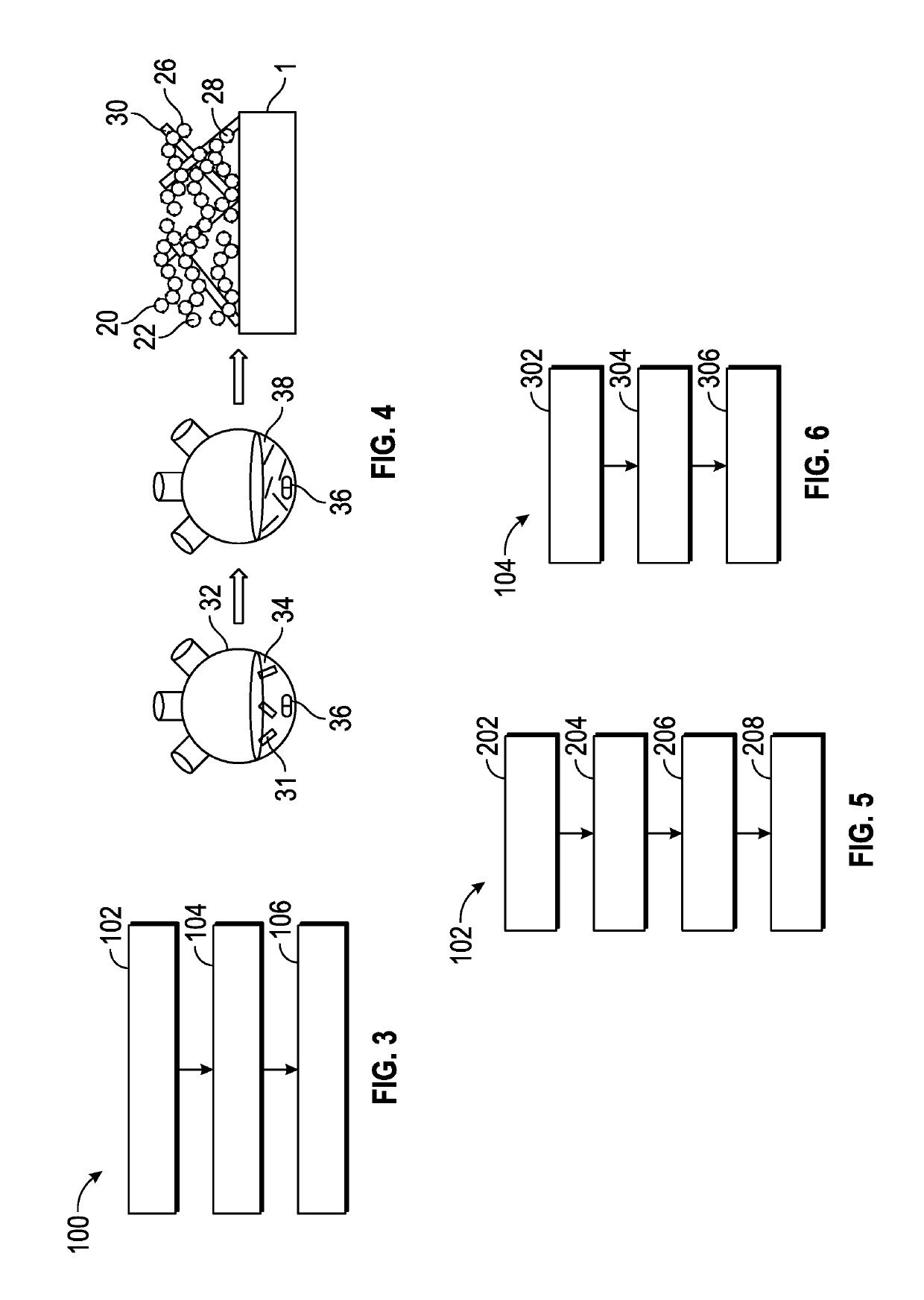Fuel cell with segregated electrolyte distribution and method for making the same
a fuel cell and electrolyte technology, applied in the field of fuel cells, can solve problems such as the challenge of controlling local ionomer distribution, and achieve the effects of maximizing energy conversion, improving performance, and minimizing interaction
- Summary
- Abstract
- Description
- Claims
- Application Information
AI Technical Summary
Benefits of technology
Problems solved by technology
Method used
Image
Examples
Embodiment Construction
[0017]FIG. 1 is a schematic cross-sectional view of an exemplary fuel cell 14 including a membrane electrode assembly (MEA) 12 having a layered electrode as described in detail below. The MEA 12 is sandwiched between a first gas diffusion layer 11 and a second gas diffusion layer 13. The membrane assembly comprises a proton-conductive polymer electrolyte membrane (PEM) 1 sandwiched between an anode layer 3 and a cathode layer 2. Each of the anode layer 3 and the cathode layer 2 is an electrode 4.
[0018]The PEM 1 may also be referred to as the proton exchange membrane and defines a first membrane surface 16 and a second membrane surface 18 opposite the first membrane surface 16. The anode layer 3 is disposed on the first membrane surface 16, and the cathode layer 2 is disposed on the second membrane surface 18. The PEM 1 may include any polyelectrolyte suitable for the fuel cell 14. The polymer electrolyte may include hydrocarbon- and fluorocarbon-based resins. Hydrocarbon-based elect...
PUM
| Property | Measurement | Unit |
|---|---|---|
| diameter | aaaaa | aaaaa |
| diameter | aaaaa | aaaaa |
| temperature | aaaaa | aaaaa |
Abstract
Description
Claims
Application Information
 Login to View More
Login to View More - R&D
- Intellectual Property
- Life Sciences
- Materials
- Tech Scout
- Unparalleled Data Quality
- Higher Quality Content
- 60% Fewer Hallucinations
Browse by: Latest US Patents, China's latest patents, Technical Efficacy Thesaurus, Application Domain, Technology Topic, Popular Technical Reports.
© 2025 PatSnap. All rights reserved.Legal|Privacy policy|Modern Slavery Act Transparency Statement|Sitemap|About US| Contact US: help@patsnap.com


